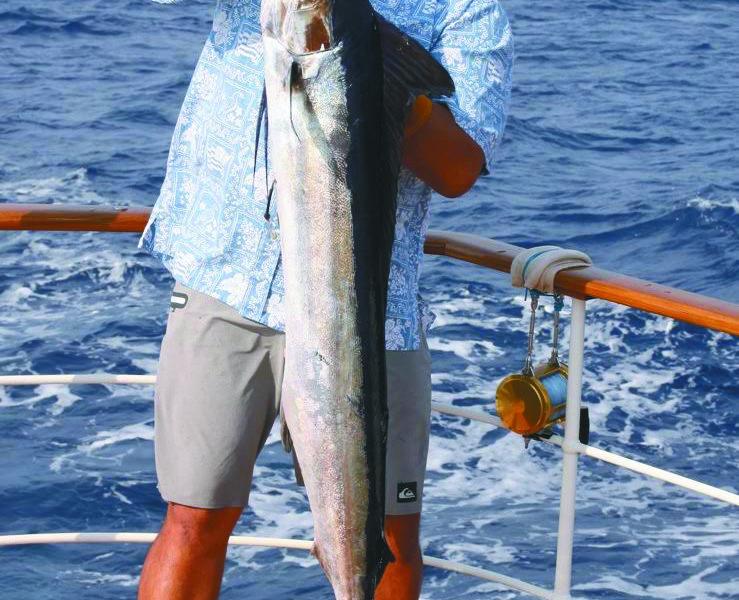A crew member from M/Y Calliope died in an accident in Sydney Harbour on Feb. 8, according to The Daily Telegraph.The article reported that the…

Motoryacht Meamina crew assist in fatal dive accident
Oct 28, 2019 by Dorie CoxBy Dorie Cox
Large yacht crew are highly trained and practice regular safety drills, but there are some things they may not be prepared for. Several of M/Y Meamina‘s crew faced such an incident in the waters off of Nammos Beach, Mykonos, in Greece in September.
Expecting – and hoping – to assist in a rescue of nearby S/Y Sea Dragon’s missing diver, they instead found a tragedy: The diver had died while retrieving the yacht’s anchor.
It had been five days of wind with full-time anchor watch on M/Y Meamina, a 194-foot (59m) Benetti. The yacht had two anchors out because of winds of near gale strength with gusts over 30 knots. The handful of boats anchored nearby, including S/Y Sea Dragon located off the stern, had seen waves of nearly 20 feet.
By Sept. 16, the winds dropped to 11-16 knots with gusts around 20 knots. Meamina‘s deck crew were at work in the garage when Sea Dragon‘s tender came to the stern, driven by a deckhand. The time was 14:30. The deckhand seemed agitated.
“He told my crew who were on duty in our garage that he had a diver in the water who was supposed to clear their anchor but had not resurfaced,” Capt. David Cherington wrote later in a report.
Immediately, Capt. Cherington, a scuba diver himself, gathered several crew to respond. First Officer Elliot Meadwell and Bosun Paul Schalkwyk, also qualified divers, donned wetsuits and full dive gear. The captain took them, along with Deckhand Will Reed, to Sea Dragon by tender.
The Sea Dragon was approximately 1 nautical mile offshore and apparently adrift. Two crew on board appeared very agitated and said their crew member was still underwater.
The time was now 15:21. Within 10 minutes, Meadwell and Schalkwyk located the missing diver at about 115 feet (35m) of water. He was non-responsive.
Looking back
In an official report, Capt. Cherington relayed what his crew saw when they encountered the missing diver: They found him entangled in the yacht anchor chain at a depth of approximately 35m. His regulator was not in his mouth, and he was limp and just bobbing up and down with the movement of the yacht. His gauges were caught around his neck and the chain. They were confident at that time that he was already deceased.
Looking back on the tragedy, Capt. Cherington said the Meamina crew did everything possible to help, as the local coast guard vessel did not arrive to the scene for 24 hours.
“I would like to give kudos to my guys,” he said weeks later while on leave in Fort Lauderdale. “First, they volunteered to do a dangerous mission.”
Both Meadwell and Schalkwyk are trained in The International Convention on Standards of Training, Certification and Watchkeeping for Seafarers (STCW) – which includes personal survival, safety and first aid – and they properly used all their safety gear.
“We do what is normally expected. It’s what we do,” Capt. Cherington said.
Meadwell and Schalkwyk worked together to disentangle the diver, the captain stated in the report. They managed to cut him free from the chain and tried to hold the body as they resurfaced.
“No one is trained to retrieve a body,” Capt. Cherington said. “There are really no rules governing what we went through.”
Because of the depth, the divers resurfaced slowly and tried to do safety stops to avoid decompression sickness. Schalkwyk had issues with his BCD (buoyancy control device) and surfaced before Meadwell. While he was helped back on board the tender, Meadwell still had hold of the diver for a short time before he lost the body because of the strong current and conditions, the captain wrote.
With both divers on board the tender, the captain noted the GPS location as 37°23.597N and 025°29.345E. Then they drove the tender to Sea Dragon to tell the captain and crew what had happened.
Lessons learned
Although not able to comment on what he thought happened with Sea Dragon, Capt. Cherington shared this incident to show how crew try to look out for each other when there is no one else to assist.
Much of what transpired is not officially covered in yacht crew training. Anchor management varies by boat and is up to the captain, and anchor watch rules are covered in standing operating procedures, Capt. Cherington said.
But several aspects do have protocol, including the use of distress calls.
“At no time in the early stages did we receive a mayday or pan-pan from Sea Dragon,” Capt. Cherington wrote in his report. Once on scene with the tender, he requested backup and made a pan-pan radio call for Sea Dragon with the yacht’s location.
Local emergency authorities responded and asked for more details, which Capt. Cherington explained by radio and then in a telephone call. Once back on board Meamina, he called the yacht manager at Burgess and has since been in contact with the local authorities.
He recommended that crew never scuba dive alone. He stressed that with both anchor management or scuba diving, crew should always have a plan that has been discussed before implementation. And most importantly, they should be sure that everyone understands the plan.
Capt. Cherington documented several other precautions he administered after the incident: “Due to the depth that Elliot and Paul dived to, they have been sent to an Athens hospital by way of fast ferry for testing to ensure they are not suffering from decompression sickness. They will attend the specialist naval hospital that has the required equipment to treat them.”
Weeks after the incident he said, “The boys are fine, they did spend time in a hyperbaric chamber to ensure no future health problems.” Both crew have also talked with counselors to discuss the incident, “to help get through their anxiety over finding a dead diver.”
Although he had confidence in how Meadwell and Schalkwyk would handle themselves during the incident, Capt. Cherington said that to send them so deep for a search and rescue was frightening.
“Once they were in the water, I had no control of what they did,” he said. “The fact they did everything they could to save this guy made me very proud of them.”
Dorie Cox is editor of The Triton. Comments are welcome below.
Topics:



